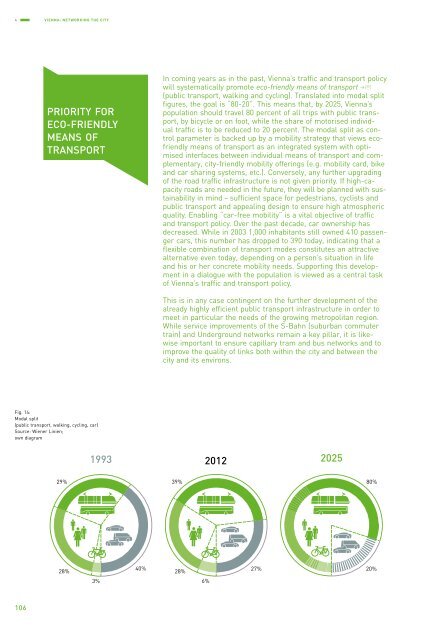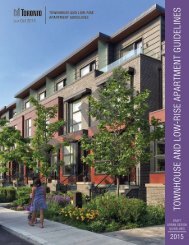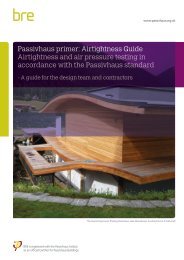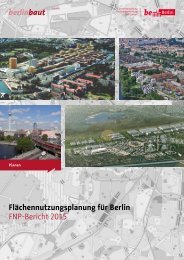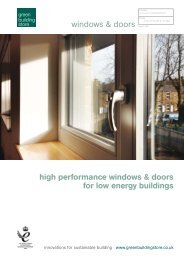TRUE URBAN SPIRIT
b008379b
b008379b
Create successful ePaper yourself
Turn your PDF publications into a flip-book with our unique Google optimized e-Paper software.
4 VIENNA: NETWORKING THE CITY<br />
PRIORITY FOR<br />
ECO-FRIENDLY<br />
MEANS OF<br />
TRANSPORT<br />
In coming years as in the past, Vienna’s traffic and transport policy<br />
will systematically promote eco-friendly means of transport<br />
(public transport, walking and cycling). Translated into modal split<br />
figures, the goal is “80-20”. This means that, by 2025, Vienna’s<br />
population should travel 80 percent of all trips with public transport,<br />
by bicycle or on foot, while the share of motorised individual<br />
traffic is to be reduced to 20 percent. The modal split as control<br />
parameter is backed up by a mobility strategy that views ecofriendly<br />
means of transport as an integrated system with optimised<br />
interfaces between individual means of transport and complementary,<br />
city-friendly mobility offerings (e. g. mobility card, bike<br />
and car sharing systems, etc.). Conversely, any further upgrading<br />
of the road traffic infrastructure is not given priority. If high-capacity<br />
roads are needed in the future, they will be planned with sustainability<br />
in mind – sufficient space for pedestrians, cyclists and<br />
public transport and appealing design to ensure high atmospheric<br />
quality. Enabling “car-free mobility” is a vital objective of traffic<br />
and transport policy. Over the past decade, car ownership has<br />
decreased. While in 2003 1,000 inhabitants still owned 410 passenger<br />
cars, this number has dropped to 390 today, indicating that a<br />
flexible combination of transport modes constitutes an attractive<br />
alternative even today, depending on a person’s situation in life<br />
and his or her concrete mobility needs. Supporting this development<br />
in a dialogue with the population is viewed as a central task<br />
of Vienna’s traffic and transport policy.<br />
This is in any case contingent on the further development of the<br />
already highly efficient public transport infrastructure in order to<br />
meet in particular the needs of the growing metropolitan region.<br />
While service improvements of the S-Bahn (suburban commuter<br />
train) and Underground networks remain a key pillar, it is likewise<br />
important to ensure capillary tram and bus networks and to<br />
improve the quality of links both within the city and between the<br />
city and its environs.<br />
Fig. 14:<br />
Modal split<br />
(public transport, walking, cycling, car)<br />
Source: Wiener Linien;<br />
own diagram<br />
1993<br />
2012 2025<br />
29% 39% 80%<br />
28%<br />
40%<br />
28%<br />
27% 20%<br />
3% 6%<br />
106


